Understanding the Importance of Home Staging
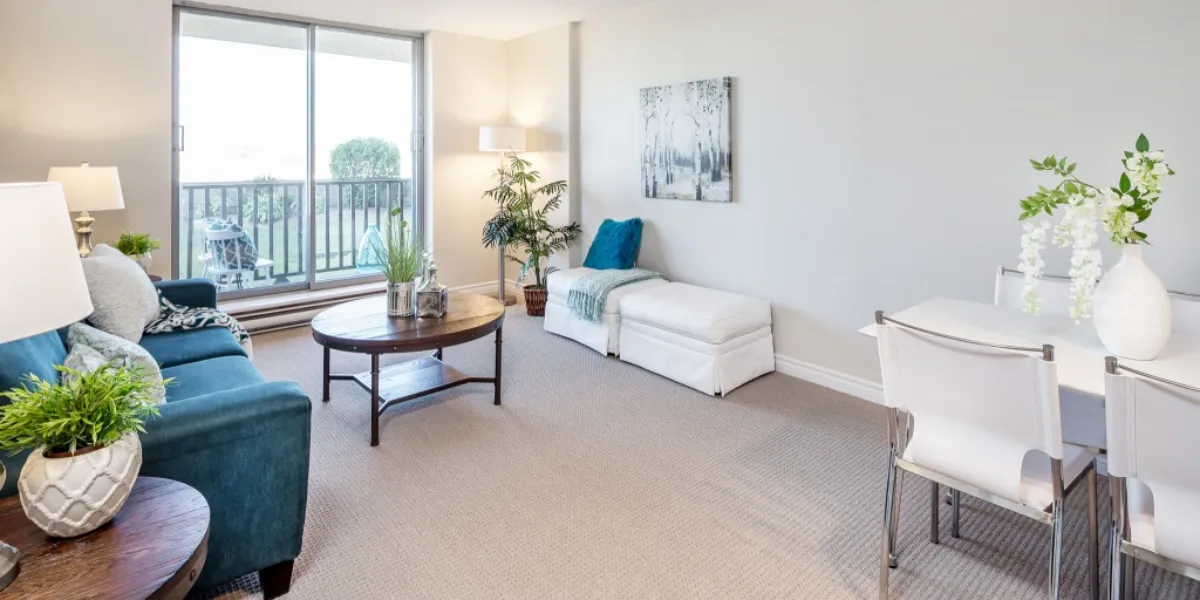
Staging Your Property For A Quick Sale Home staging is a strategic process used to prepare a property for sale in the real estate market. It involves decorating and arranging a home in a way that highlights its best features, making it more appealing to potential buyers. Understanding the importance of home staging can significantly impact the speed and profitability of a sale. Here are several key reasons why home staging is essential:
First Impressions Matter: Buyers often make a judgment about a property within the first few minutes of viewing it. A well-staged home creates a positive initial impression, setting the tone for the rest of the tour. It helps buyers envision themselves living in the space, which can make them more inclined to make an offer.
Maximizes Space and Functionality: Effective staging showcases the full potential of a home by maximizing space and highlighting functionality. Proper furniture arrangement and the removal of excess items can make rooms look larger and more inviting, demonstrating how each area can be utilized effectively.
Emotional Connection: Staging helps create an emotional connection between the buyer and the home. By setting up appealing living spaces, buyers can imagine their own lives in the property, which can lead to stronger emotional responses and a higher likelihood of making an offer.
Enhances Visual Appeal: Professional staging enhances the visual appeal of a property, making it more photogenic. High-quality photos are crucial for online listings, where the majority of buyers start their home search. A staged home stands out in photographs, attracting more potential buyers to schedule viewings.
Competitive Edge: In a competitive real estate market, staging gives a property a competitive edge. Homes that are staged tend to sell faster and for higher prices compared to those that are not. Staging can differentiate a property from others in the same price range, making it more attractive to buyers.
Repairs and Updates: The staging process often involves minor repairs and updates that can significantly improve the overall appearance of a home. Fixing small issues and adding fresh coats of paint can make a property look well-maintained and move-in ready, which is appealing to buyers who prefer homes requiring minimal immediate work.
Neutralizes Personal Tastes: Staging neutralizes the homeowner’s personal tastes, which might not appeal to all buyers. By creating a more neutral, universally appealing environment, it ensures that the property attracts a broader audience. Potential buyers can more easily imagine their own décor and style in the space.
Increases Perceived Value: A well-staged home often appears more valuable than an unstaged one. Buyers are willing to pay a premium for homes that look well-cared for and ready to move into. Staging can create the perception of higher value, potentially leading to better offers.
Facilitates Faster Sales: Statistics show that staged homes tend to sell faster than non-staged homes. The reduced time on the market can be crucial for sellers who are eager to move or need to sell quickly due to various circumstances.
Return on Investment: The cost of staging is often outweighed by the return on investment. Many sellers find that the increase in sale price and the reduced time on the market justify the expense of professional staging services.
Understanding the importance of home staging is essential for anyone looking to sell their property quickly and at the best possible price. By making a home more appealing and move-in ready, staging can transform the selling process and lead to successful, profitable sales.
First Impressions: Enhancing Curb Appeal
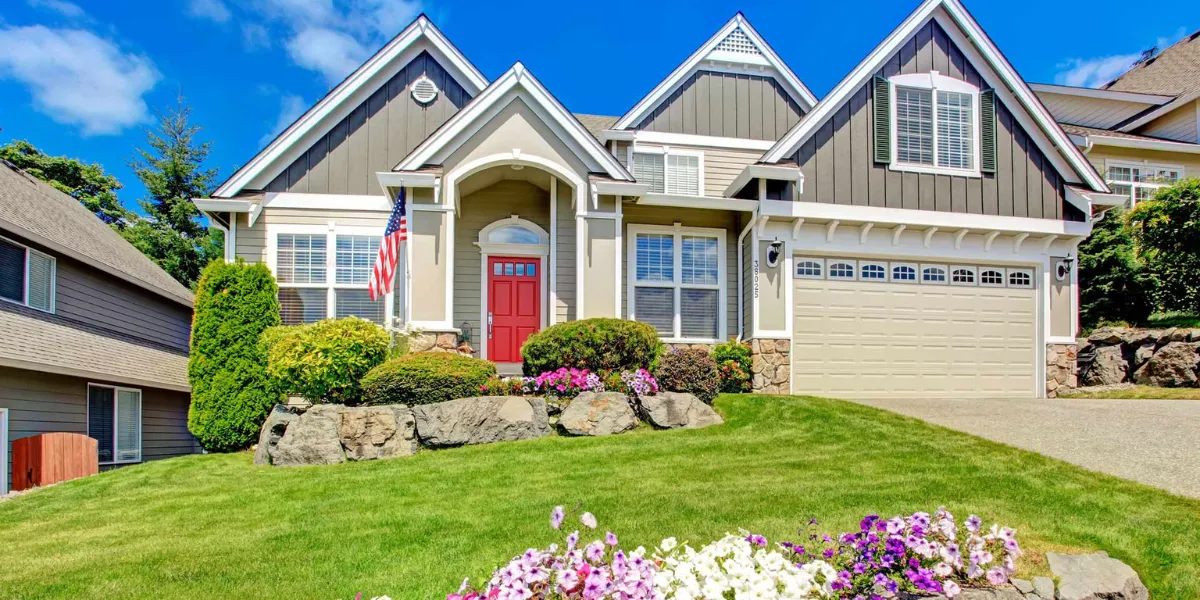
Curb appeal refers to the attractiveness of a property as viewed from the street. It’s the first impression potential buyers get when they visit or even drive by your home. Enhancing curb appeal is crucial because it sets the stage for the rest of the home tour. Here’s why it’s important and how to effectively enhance it:
First Impressions Last: The exterior of your home is the first thing buyers see. A positive first impression can make buyers more excited and open-minded about the rest of the property.
Encourages Showings: An appealing exterior can attract more buyers to schedule showings, increasing the likelihood of a quicker sale.
Reflects Home Maintenance: A well-maintained exterior suggests that the interior is also well-cared for, giving buyers confidence in the property’s overall condition.
Key Elements to Enhance Curb Appeal
Landscaping: A well-manicured lawn, trimmed hedges, and vibrant flowers can make a significant impact. Consider adding mulch to garden beds and keeping walkways clear of debris.
Exterior Cleaning: Power wash the exterior walls, driveway, and sidewalks. Clean the windows and gutters to give your home a fresh, well-maintained look.
Front Door: The front door is a focal point. Paint it a welcoming color, ensure the hardware is polished, and consider adding a stylish welcome mat.
Lighting: Adequate exterior lighting not only enhances safety but also highlights the home’s features at night. Install or update porch lights, pathway lights, and landscape lighting.
House Numbers and Mailbox: Ensure house numbers are visible and in good condition. An attractive, well-maintained mailbox can also add to the home’s appeal.
Roof and Gutters: Ensure the roof is in good condition and free of moss or debris. Clean or replace gutters if necessary, as they are noticeable elements of the home’s exterior.
Driveway and Walkways: Repair any cracks in the driveway and walkways. Consider adding a fresh layer of sealant to the driveway for a polished look.
Seasonal Considerations:
Spring/Summer: Plant colorful flowers, keep the grass green and mowed, and maintain regular garden care.
Fall/Winter: Rake leaves, clear any snow and ice from walkways, and add seasonal decorations like wreaths to make the home inviting despite the weather.
Cost-Effective Enhancements:
Paint: A fresh coat of paint on the front door, trim, or shutters can make a big difference.
DIY Landscaping: Simple landscaping tasks like planting flowers or adding potted plants near the entrance can be done without professional help.
Small Repairs: Fixing minor issues like a broken fence or loose railings can improve the overall look of the property without significant expense.
Creating a Welcoming Entrance:
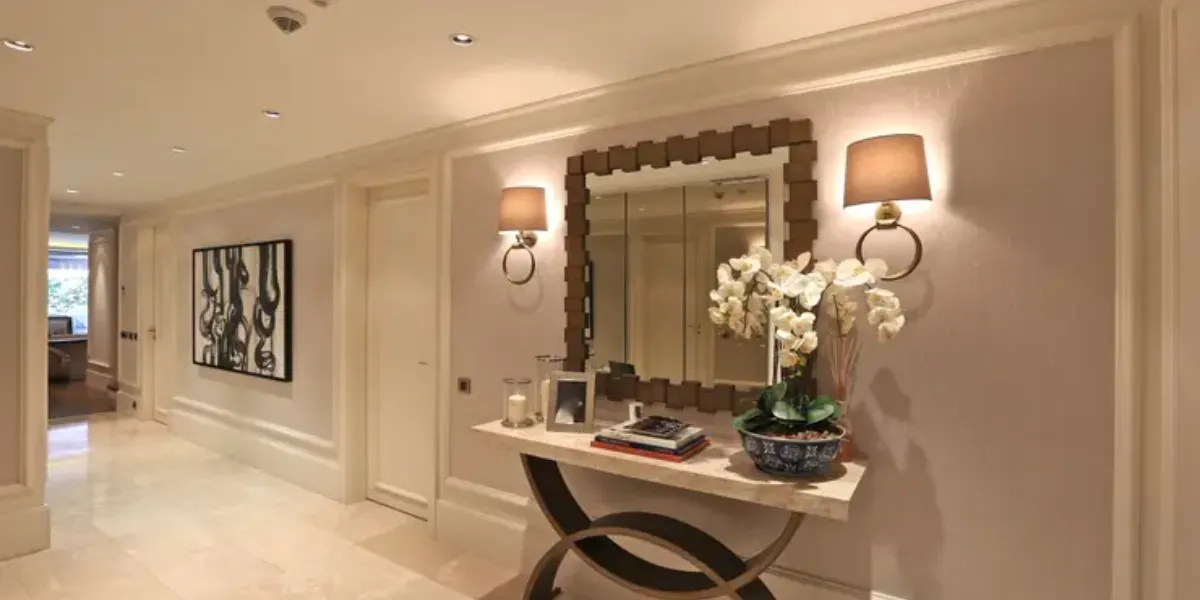
Porch Decor: Add a few pieces of outdoor furniture or decorative items like potted plants, a welcome sign, or a seasonal wreath.
Clean and Tidy: Keep the porch area clean and clutter-free. Store away any unnecessary items like garden tools or children’s toys.
Professional Help:
Landscapers and Exterior Painters: For larger projects, consider hiring professionals to ensure the job is done well and efficiently.
Real Estate Agents: Consult with your real estate agent for specific recommendations tailored to your home and market.
Enhancing curb appeal is a critical step in staging your property for a quick sale. It attracts potential buyers, makes a strong positive impression, and sets the tone for the rest of their experience with your home. By investing time and effort into the exterior appearance, you increase the chances of selling your home quickly and at a favorable price.
Declutter and Depersonalize: Creating a Neutral Canvas
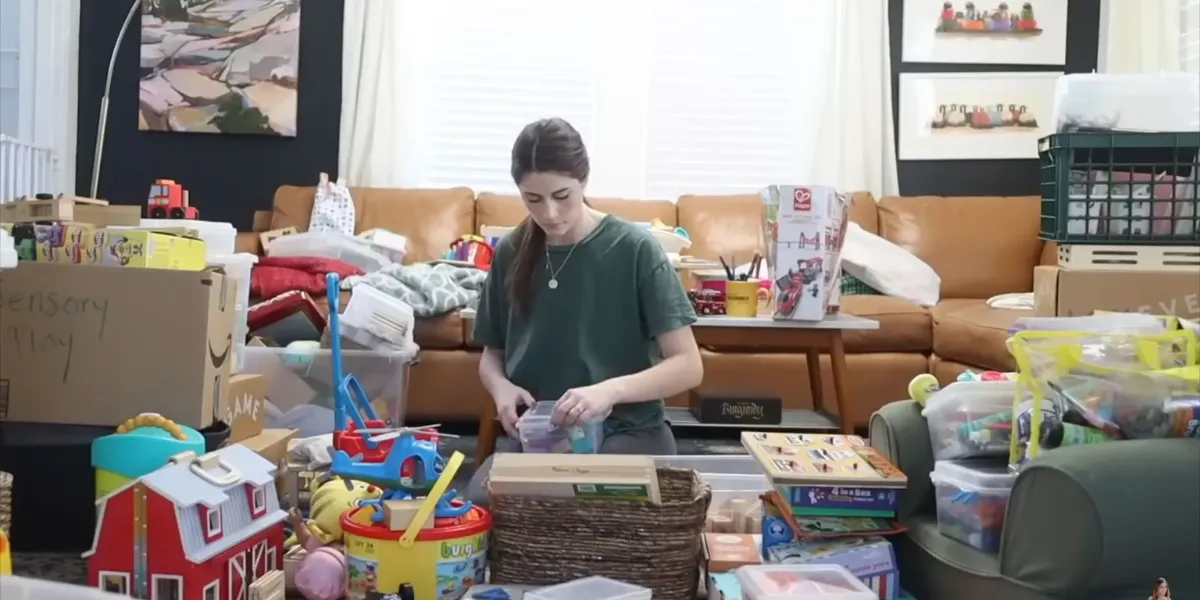
Decluttering and depersonalizing your home is a crucial part of the staging process. It involves removing excess items and personal touches to create a clean, neutral environment that appeals to the widest range of potential buyers. Here’s why this step is important and how to effectively achieve it:
Importance of Decluttering and Depersonalizing:
Helps Buyers Envision Themselves: When a home is free of personal items and clutter, buyers can more easily imagine themselves living in the space. It allows them to focus on the home’s features rather than the current owner’s belongings.
Creates a Sense of Space: Decluttering makes rooms appear larger and more open. This can be especially beneficial for smaller homes, as it maximizes the perceived space.
Highlights the Home’s Best Features: A clutter-free environment draws attention to the home’s architectural details, natural light, and overall layout, making it easier for buyers to appreciate the property’s strengths.
Steps to Declutter:
Room-by-Room Approach: Tackle one room at a time to make the process more manageable. Start with the most cluttered areas and work your way through the entire house.
Sort and Purge: Go through each room and sort items into categories: keep, donate, sell, and discard. Be ruthless in eliminating unnecessary items.
Storage Solutions: Invest in temporary storage solutions if needed. Store excess furniture, seasonal items, and other non-essential belongings off-site to keep your home uncluttered during the selling process.
Organize Remaining Items: Arrange the items you decide to keep in an orderly and aesthetically pleasing manner. Use storage bins, baskets, and shelves to keep things tidy.
Steps to Depersonalize:
Remove Personal Photos and Memorabilia: Take down family photos, vacation souvenirs, and any other personal items. Replace them with neutral artwork or leave walls blank to create a more universal appeal.
Neutralize Personal Taste: Consider toning down any bold or unusual decor choices. Opt for neutral colors and simple, classic design elements that appeal to a broader audience.
Store Personal Collections: If you have collections of items on display (e.g., figurines, trophies, or memorabilia), pack them away. These can be distracting and make it harder for buyers to picture their own belongings in the space.
Neutralize Gender-Specific Decor: If you have rooms that are heavily gender-specific (e.g., a very feminine bedroom or a heavily masculine den), consider neutralizing the decor to appeal to a wider range of buyers.
Creating a Neutral Canvas:
Paint in Neutral Tones: If your walls are painted in vibrant or unusual colors, consider repainting them in neutral shades like white, beige, or light gray. Neutral colors create a calm and inviting atmosphere.
Simple and Stylish Decor: Use minimalistic and tasteful decor to enhance the space without overwhelming it. Think of items like throw pillows, rugs, and wall art that complement the home’s style without drawing too much attention.
Minimalistic Furniture Arrangement: Arrange furniture in a way that showcases the flow and functionality of each room. Avoid overcrowding spaces with too much furniture.
Final Touches:
Clean and Polished: Ensure that every room is clean and free of dust, grime, and odors. A spotless home is more appealing and signals to buyers that the property has been well-maintained.
Fresh and Inviting: Consider adding fresh flowers, potted plants, or a bowl of fruit to add a touch of life and freshness to the space.
Consistent Theme: Maintain a consistent style and color palette throughout the home to create a cohesive and harmonious look.
Decluttering and depersonalizing your home is a powerful way to create a neutral canvas that appeals to a broad range of buyers. By removing personal items and excess belongings, you allow potential buyers to envision themselves in the space, making it more likely that they will connect with the property and make an offer. This step is essential for showcasing your home’s full potential and facilitating a quick and successful sale.
Clean and Repair: Ensuring a Pristine Presentation

A spotless, well-maintained home is crucial for making a positive impression on potential buyers. Cleanliness and minor repairs demonstrate that the property has been well-cared for, which can significantly increase its appeal. Here’s why this step is important and how to effectively achieve a pristine presentation:
Importance of Cleaning and Repairs:
Positive First Impressions: A clean, well-maintained home immediately creates a positive impression, showing buyers that the property is cared for and move-in ready.
Reduces Buyer Concerns: Visible dirt, grime, and disrepair can raise concerns about hidden issues and potential costs, discouraging buyers from making an offer.
Highlights Home Features: Clean surfaces and well-repaired fixtures allow the home’s best features to shine, making it easier for buyers to appreciate the property’s value.
Comprehensive Cleaning Checklist:
Deep Clean All Rooms: Thoroughly clean every room, including floors, walls, ceilings, and windows. Pay special attention to high-traffic areas and spaces that tend to accumulate dirt, such as kitchens and bathrooms.
Eliminate Odors: Address any sources of unpleasant odors, such as pet smells, cooking fumes, or mildew. Use air fresheners, open windows, and consider professional cleaning services if necessary.
Focus on Details: Clean light fixtures, baseboards, vents, and other often-overlooked areas. These details can make a big difference in the overall perception of cleanliness.
Polish and Shine: Polish surfaces like countertops, appliances, and fixtures to make them gleam. Clean windows inside and out to let in more natural light and improve the view.
Essential Repairs:
Fix Obvious Issues: Address any visible signs of damage, such as cracked tiles, leaky faucets, broken windows, or peeling paint. These repairs are often inexpensive but can make a significant impact on the home’s appearance.
Ensure All Systems Work: Make sure that all electrical, plumbing, and HVAC systems are in working order. Replace burnt-out light bulbs, check that all outlets and switches function, and ensure that heating and cooling systems are operational.
Repair Structural Problems: Address any minor structural issues, such as loose handrails, squeaky floors, or sticking doors and windows. These repairs enhance the home’s safety and functionality.
Update Fixtures and Hardware: Replace outdated or worn fixtures and hardware, such as cabinet handles, light fixtures, and faucets. Modern, cohesive hardware can give a room an updated look without major renovations.
Exterior Cleaning and Repairs:
Power Wash Exterior: Clean the exterior of the home, including siding, walkways, and driveways, using a power washer. This can remove years of dirt and grime, instantly refreshing the look of the property.
Clean and Repair Gutters: Clear out gutters and downspouts to ensure proper drainage and avoid water damage. Repair any loose or damaged sections.
Inspect and Repair the Roof: Check the roof for missing or damaged shingles and make necessary repairs. A well-maintained roof reassures buyers about the home’s overall condition.
Maintain the Yard: Keep the lawn mowed, trim bushes and trees, and remove any weeds or dead plants. A neat, tidy yard enhances the home’s curb appeal.
Staging Tips for a Pristine Look:
Declutter First: Before deep cleaning, declutter the home to make cleaning easier and more effective.
Professional Services: Consider hiring professional cleaners for a thorough, deep clean, especially for challenging areas like carpets, upholstery, and high ceilings.
Regular Maintenance: Keep up with regular cleaning and maintenance throughout the selling process to ensure the home remains in pristine condition for every showing.
Ensuring a pristine presentation through comprehensive cleaning and minor repairs is a fundamental step in staging your property for a quick sale. A clean, well-maintained home not only appeals to potential buyers but also builds their confidence in the property’s value and condition. By investing time and effort into making your home shine, you increase its marketability and attractiveness, paving the way for a successful sale.
Optimizing Furniture Arrangement for Flow and Space
Proper furniture arrangement is crucial in staging your home for a quick sale. It enhances the home’s flow, maximizes the perceived space, and helps potential buyers envision how they can use the rooms. Here’s why optimizing furniture arrangement is important and how to effectively achieve it:
Importance of Furniture Arrangement:
Enhances Visual Appeal: Well-arranged furniture makes a room look more attractive and inviting, creating a positive impression on buyers.
Maximizes Space: Strategic placement of furniture can make rooms feel larger and more functional, which is especially important in smaller homes or apartments.
Improves Flow: Proper furniture arrangement ensures smooth traffic flow throughout the home, making it easy for buyers to move around and see the entire property without obstruction.
Steps to Optimize Furniture Arrangement:
Assess Each Room: Evaluate the size and shape of each room to determine the best layout. Consider the room’s purpose and how furniture can best serve that function.
Create Focal Points: Arrange furniture to highlight the room’s best features, such as a fireplace, large window, or built-in shelving. Focal points draw attention and add interest to the space.
Ensure Balance and Symmetry: Achieve visual balance by distributing furniture evenly throughout the room. Symmetrical arrangements often work well to create a harmonious and orderly look.
Allow for Movement: Leave enough space between pieces of furniture to ensure easy movement. Avoid overcrowding, which can make a room feel cramped and cluttered.
Living Room Tips:
Anchor with a Rug: Use an appropriately sized area rug to anchor the seating arrangement and define the space. Ensure all furniture sits on or touches the edges of the rug.
Arrange for Conversation: Position seating to encourage conversation, typically in a U-shape or H-shape configuration. Ensure there’s a clear view of the focal point, such as a TV or fireplace.
Use Scaled Furniture: Choose furniture that fits the scale of the room. Large furniture can overwhelm a small living room, while small pieces can get lost in a large space.
Bedroom Tips:
Position the Bed Strategically: Place the bed against the main wall, preferably opposite the door, to create a welcoming view when entering. Ensure there’s space to walk on both sides.
Minimal Furniture: Use only essential furniture to avoid overcrowding. A bed, bedside tables, and a dresser are usually sufficient.
Maximize Storage: Use under-bed storage or built-in closets to keep the room tidy and free of clutter.
Kitchen and Dining Area Tips:
Clear Countertops: Keep countertops clear of small appliances and clutter to make the space look larger and more functional.
Dining Table Placement: Center the dining table in the room and ensure there’s enough space around it for chairs to be pulled out comfortably.
Create a Breakfast Nook: If space allows, create a cozy breakfast nook with a small table and chairs, enhancing the kitchen’s appeal as a multifunctional space.
Bathroom Tips:
Maximize Storage: Use cabinets, shelves, or baskets to keep toiletries organized and out of sight. A tidy bathroom looks larger and more inviting.
Use Mirrors: Install a large mirror to reflect light and create the illusion of more space.
Clear the Floor: Keep the floor free of rugs, hampers, or scales to make the bathroom look more spacious.
Office and Study Area Tips:
Functional Layout: Arrange the desk and chair for optimal productivity, ensuring good lighting and a clear view of the room.
Minimize Distractions: Keep the area free of unnecessary items to create a focused, professional environment.
Storage Solutions: Use shelves and drawers to keep the workspace organized and clutter-free.
General Tips for All Rooms:
Neutral Decor: Use neutral colors and simple decor to appeal to the widest range of buyers. Avoid overly personalized or bold decor choices.
Use Mirrors and Lighting: Strategically place mirrors to reflect light and create the illusion of more space. Ensure each room is well-lit with a combination of natural and artificial lighting.
Highlight Traffic Flow: Arrange furniture to guide buyers through the home, ensuring a natural and intuitive flow from room to room.
Optimizing furniture arrangement for flow and space is a key aspect of staging your property for a quick sale. By creating an inviting, functional, and spacious environment, you help potential buyers envision themselves living in the home, increasing the likelihood of a successful sale.
Lighting: Brightening Up Your Home
Proper lighting plays a crucial role in staging your home for a quick sale. It enhances the ambiance, makes spaces appear larger and more inviting, and highlights the home’s best features. Here’s why lighting is important and how to effectively brighten up your home:
Importance of Good Lighting:
Creates a Welcoming Atmosphere: Well-lit homes feel warm and inviting, making a positive first impression on potential buyers.
Enhances Visual Appeal: Good lighting highlights architectural features, decor, and finishes, making the home look more attractive.
Increases Perceived Space: Bright rooms appear larger and more open, which is especially beneficial for smaller spaces.
Sets the Mood: Different types of lighting can create various atmospheres, from cozy and relaxed to bright and energizing, helping buyers envision how they would use the space.
Types of Lighting:
Ambient Lighting: General illumination that provides overall brightness. Examples include ceiling fixtures, chandeliers, and recessed lights.
Task Lighting: Focused lighting for specific activities, such as reading or cooking. Examples include desk lamps, under-cabinet lights, and pendant lights.
Accent Lighting: Decorative lighting that highlights specific features, such as artwork, architectural details, or plants. Examples include track lighting, wall sconces, and spotlights.
Maximizing Natural Light:
Clean Windows: Ensure all windows are clean inside and out to maximize the amount of natural light entering the home.
Use Light Window Treatments: Opt for sheer curtains or light-colored blinds that let in natural light while providing privacy.
Trim Outdoor Plants: Prune trees and bushes outside windows to prevent them from blocking light.
Enhancing Artificial Lighting:
Update Light Fixtures: Replace outdated or dim fixtures with modern, bright ones. Consider fixtures that complement the style of your home.
Use LED Bulbs: Choose energy-efficient LED bulbs that provide bright, natural-looking light. Opt for bulbs with a color temperature of around 2700K to 3000K for a warm, inviting glow.
Layer Lighting: Combine ambient, task, and accent lighting to create a well-lit, dynamic space. Use dimmers to adjust the light levels according to the time of day and mood.
Room-by-Room Lighting Tips:
Living Room:
Use a mix of ceiling lights, floor lamps, and table lamps to create a warm, inviting atmosphere.
Highlight key features such as artwork, shelves, or architectural details with accent lighting.
Kitchen:
Ensure bright, even lighting with a combination of ceiling lights and under-cabinet lights.
Use pendant lights over islands or breakfast bars to add both task lighting and visual interest.
Bedrooms:
Create a cozy atmosphere with bedside lamps, overhead lights, and possibly a dimmable ceiling fixture.
Use soft, warm bulbs to make the space feel inviting and relaxing.
Bathrooms:
Use bright, even lighting around the vanity area to eliminate shadows and provide good visibility.
Consider adding a statement light fixture or recessed lighting for overall illumination.
Home Office:
Ensure ample task lighting with desk lamps and overhead lights to create a productive workspace.
Avoid harsh lighting; instead, opt for adjustable lamps that reduce glare and eye strain.
Outdoor Lighting:
Highlight Pathways: Use pathway lights to illuminate walkways and enhance curb appeal.
Illuminate Entrances: Ensure the front door and porch area are well-lit to create a welcoming entryway.
Showcase Landscaping: Use spotlights or landscape lighting to highlight garden features, trees, or architectural details.
Color and Reflective Surfaces:
Light Colors: Use light, neutral colors on walls and ceilings to reflect more light and brighten the space.
Mirrors: Strategically place mirrors to reflect natural and artificial light, making rooms appear larger and brighter.
Glossy Finishes: Incorporate furniture and decor with glossy or reflective surfaces to enhance the light in a room.
Energy Efficiency:
LED Bulbs: Opt for LED bulbs, which are more energy-efficient and have a longer lifespan than traditional incandescent bulbs.
Smart Lighting: Consider smart lighting systems that allow you to control lighting remotely and set schedules to ensure optimal lighting at all times.
Brightening up your home through strategic use of lighting is essential for creating an appealing, spacious, and inviting environment. Proper lighting can transform the look and feel of your home, making it more attractive to potential buyers and increasing the likelihood of a quick sale.
Choosing the Right Color Palette for Broad Appeal
Selecting the right color palette is a critical aspect of staging your home for sale. The colors you choose can significantly impact a buyer’s perception, influencing their emotions and overall impression of the property. Here’s why choosing the right color palette is important and how to effectively create a universally appealing environment:
Importance of a Neutral Color Palette:
Broad Appeal: Neutral colors have a broad appeal, attracting a wider range of potential buyers. They create a blank canvas, allowing buyers to imagine their own furnishings and decor in the space.
Creates a Cohesive Look: A consistent color palette throughout the home ensures a harmonious and cohesive appearance, making the property feel well-planned and inviting.
Enhances Space and Light: Light, neutral colors can make rooms feel larger and brighter, enhancing the overall sense of space and openness.
Popular Neutral Colors:
Whites and Off-Whites: Crisp white or off-white shades provide a clean, fresh look and can make any room feel more spacious and airy.
Beiges and Tans: Warm beige and tan tones create a cozy, inviting atmosphere without being too bold or overpowering.
Grays: Soft, light grays are modern and versatile, complementing a variety of decor styles and furnishings.
Greiges: A blend of gray and beige, greige offers the warmth of beige with the modernity of gray, making it a popular choice for a balanced, neutral backdrop.
Room-by-Room Color Tips:
Living Room: Opt for soft, warm neutrals like beige, light gray, or greige to create a welcoming and comfortable space. These colors can enhance natural light and make the room feel more inviting.
Kitchen: Whites and light grays work well in kitchens, creating a clean, bright environment. Consider using slightly darker neutrals for cabinets or backsplashes to add depth without overwhelming the space.
Bedrooms: Choose calming, serene colors like soft gray, beige, or pale blue to create a restful atmosphere. These colors promote relaxation and make the bedroom feel like a retreat.
Bathrooms: Light, crisp colors such as white, light gray, or soft blue can make bathrooms feel fresh and clean. These shades also help to reflect light, making smaller bathrooms appear larger.
Home Office: Use neutral tones like light gray or beige to create a focused, distraction-free workspace. Consider accent walls in a slightly darker shade for added depth and interest.
Incorporating Accents:
Accent Walls: If you want to add a pop of color, consider a single accent wall in a complementary, subdued shade. This can add visual interest without overwhelming the room.
Accessories and Decor: Use colorful accessories like throw pillows, rugs, and artwork to add personality and style. These can easily be changed to suit different buyers’ tastes.
Consistency Throughout the Home:
Unified Palette: Choose a cohesive color palette for the entire home to ensure a seamless flow from room to room. This consistency helps to create a more spacious and harmonious environment.
Trim and Woodwork: Use a consistent color for trim and woodwork throughout the home, such as white or off-white, to provide a clean and polished look.
Paint Quality and Finish:
High-Quality Paint: Invest in high-quality paint for a smooth, durable finish. This can make a significant difference in the overall appearance and longevity of the paint job.
Appropriate Finish: Choose the right finish for each room. For example, use satin or semi-gloss for high-traffic areas like kitchens and bathrooms, and matte or eggshell for living rooms and bedrooms to minimize imperfections.
Psychological Impact of Colors:
Warm Colors: Warm neutrals like beige and tan create a cozy, welcoming atmosphere.
Cool Colors: Cool neutrals like gray and soft blue promote calmness and relaxation.
Balance and Harmony: The right combination of warm and cool tones can create a balanced, harmonious environment that appeals to a wide range of buyers.
Avoid Bold or Personal Colors:
Limit Personal Preferences: Avoid bold, trendy, or highly personal color choices that may not appeal to everyone. The goal is to create a neutral backdrop that allows buyers to envision their own style.
Neutral Decor: Keep decor and furnishings in neutral tones to complement the color palette and avoid distracting from the home’s features.
Choosing the right color palette is essential for creating a universally appealing environment that attracts potential buyers. By opting for neutral, cohesive colors and thoughtfully incorporating accents, you can enhance the home’s visual appeal, making it feel larger, brighter, and more inviting. This strategic approach helps buyers imagine themselves in the space, increasing the likelihood of a quick and successful sale.
Highlighting Key Features of Your Property
When staging your property for a quick sale, it’s essential to highlight its key features to make it stand out to potential buyers. Emphasizing the unique aspects of your home can create a lasting impression and help buyers envision the full potential of the space. Here’s why this step is important and how to effectively showcase your property’s best attributes:
Importance of Highlighting Key Features:
Differentiates Your Home: In a competitive market, showcasing unique and desirable features can set your property apart from others.
Increases Appeal: Highlighting the home’s best attributes can enhance its appeal, making it more attractive to potential buyers.
Helps Buyers Visualize: Emphasizing key features helps buyers envision how they can use and enjoy the space, making it easier for them to imagine themselves living there.
Identifying Key Features:
Architectural Elements: Unique architectural details such as crown molding, high ceilings, hardwood floors, or built-in shelving.
Modern Upgrades: Recent renovations or updates, such as a remodeled kitchen, updated bathrooms, new windows, or energy-efficient appliances.
Outdoor Spaces: Attractive outdoor areas like a landscaped garden, spacious deck, patio, or pool.
Functional Spaces: Versatile rooms such as a finished basement, home office, walk-in closets, or a guest suite.
Enhancing Curb Appeal:
Front Entrance: Make sure the front door is clean and welcoming. Add a fresh coat of paint if needed, and consider new hardware or a stylish doormat.
Landscaping: Trim bushes, mow the lawn, plant flowers, and ensure the yard is well-maintained to create a positive first impression.
Lighting: Use outdoor lighting to highlight pathways, the entrance, and key landscape features, enhancing both safety and aesthetics.
Showcasing the Interior:
Declutter and Clean: Ensure the home is clean and free of clutter so buyers can focus on the features rather than distractions.
Arrange Furniture Strategically: Position furniture to highlight focal points like fireplaces, large windows, or built-in features. Ensure that the arrangement promotes a smooth flow and maximizes space.
Neutral Decor: Use neutral colors and decor to create a blank canvas that appeals to a broad audience while allowing key features to shine.
Emphasizing Architectural Details:
Highlight Unique Elements: Use lighting and furniture placement to draw attention to unique architectural features such as exposed beams, brick walls, or intricate woodwork.
Accentuate High Ceilings: Use tall furniture and vertical decor elements to emphasize the height of the ceilings, making the space feel more expansive.
Showcase Flooring: Keep floors clean and uncluttered. Use area rugs to define spaces without covering up beautiful flooring.
Presenting Modern Upgrades:
Kitchen: Highlight modern appliances, countertops, and cabinetry. Ensure the kitchen is spotless and consider adding fresh flowers or a bowl of fruit for a touch of color.
Bathrooms: Showcase updated fixtures, tile work, and lighting. Keep bathrooms clean, and consider adding new towels and attractive toiletries.
Energy-Efficient Features: If your home has energy-efficient windows, appliances, or insulation, make sure to mention these upgrades in your listing and during showings.
Utilizing Outdoor Spaces:
Create Inviting Areas: Arrange outdoor furniture to create inviting spaces for relaxation and entertainment. Highlight features like fire pits, outdoor kitchens, or water features.
Gardens and Landscaping: Ensure gardens and landscaping are well-maintained. Use colorful plants and flowers to add vibrancy.
Outdoor Lighting: Use outdoor lighting to enhance the beauty of your yard and make the space usable after dark.
Maximizing Functional Spaces:
Home Office: Set up a dedicated home office space to appeal to buyers who work remotely. Ensure it’s well-lit and free of distractions.
Guest Suite: Stage a guest suite to show potential for hosting visitors or accommodating extended family.
Storage Solutions: Highlight ample storage spaces, such as walk-in closets, pantries, and built-in shelving.
Using Lighting to Highlight Features:
Ambient Lighting: Ensure each room is well-lit with ambient lighting to create a welcoming atmosphere.
Accent Lighting: Use accent lighting to draw attention to key features like artwork, architectural details, or outdoor landscapes.
Natural Light: Maximize natural light by keeping windows clean and using light, airy window treatments.
Professional Staging and Photography:
Hire a Professional: Consider hiring a professional stager who can highlight your home’s best features effectively.
Quality Photography: Invest in professional photography to capture your home’s key features in the best light. High-quality photos are essential for making a strong first impression online.
Highlighting the key features of your property is essential for making it stand out in a competitive market. By emphasizing the unique and desirable aspects of your home, you can attract more potential buyers, increase the property’s appeal, and ultimately facilitate a quicker and more successful sale.
Using Decor to Create a Cozy and Inviting Atmosphere
Creating a cozy and inviting atmosphere is crucial when staging your home for a quick sale. The right decor can make your property feel warm and welcoming, helping potential buyers envision themselves living comfortably in the space. Here’s why this step is important and how to effectively use decor to achieve it:
Importance of a Cozy and Inviting Atmosphere:
Emotional Connection: A home that feels cozy and inviting helps potential buyers form an emotional connection, making them more likely to envision themselves living there.
Enhances Appeal: Warm, welcoming decor enhances the overall appeal of the home, making it stand out in the minds of buyers.
Showcases Lifestyle: Thoughtful decor can highlight the lifestyle potential of the home, showing buyers how they can enjoy and utilize the space.
Choosing the Right Furniture:
Comfortable Seating: Use plush, comfortable seating like sofas, armchairs, and accent chairs to create inviting living spaces. Arrange seating to encourage conversation and relaxation.
Appropriate Scale: Ensure furniture is appropriately scaled to the room size. Avoid overcrowding, which can make a space feel cramped, and choose pieces that fit well within the room’s dimensions.
Incorporating Textiles:
Throw Pillows and Blankets: Add throw pillows and blankets to sofas, chairs, and beds to create a sense of warmth and comfort. Choose soft fabrics and neutral or coordinating colors.
Area Rugs: Use area rugs to define spaces and add texture. Rugs can make a room feel cozier, especially in living rooms and bedrooms.
Warm Color Palette:
Neutral Tones: Use a warm, neutral color palette for walls and larger furniture pieces. Shades like beige, taupe, and soft gray create a calming backdrop.
Accent Colors: Introduce warm accent colors through decor items like pillows, throws, and artwork. Colors such as soft blues, greens, and warm earth tones can enhance the cozy feel.
Lighting:
Layered Lighting: Use a combination of ambient, task, and accent lighting to create a warm and inviting atmosphere. Ensure each room is well-lit, but avoid harsh, bright lights.
Soft Bulbs: Choose soft, warm light bulbs to create a gentle, welcoming glow. Lamps and dimmable fixtures can help control the lighting mood.
Personal Touches:
Artwork and Photos: Use artwork and decor that complement the style of the home without being overly personal. Landscapes, abstract art, and tasteful prints can add character without alienating potential buyers.
Books and Magazines: Arrange books and magazines on coffee tables, shelves, or bedside tables to add a lived-in, cozy feel.
Natural Elements:
Plants and Flowers: Incorporate plants and fresh flowers to add life and color to the space. Greenery can make rooms feel fresher and more inviting.
Natural Materials: Use decor items made from natural materials like wood, stone, and woven fibers to add texture and warmth.
Seasonal Decor:
Subtle Seasonal Touches: Use subtle seasonal decor to create a timely, welcoming atmosphere. For example, use light, airy decor in the spring and summer, and warm, cozy elements in the fall and winter.
Avoid Over-Themed Decor: Keep seasonal decor tasteful and minimal to avoid overwhelming the space or turning off potential buyers.
Scent and Sound:
Pleasant Scents: Use scented candles, diffusers, or fresh flowers to create a pleasant aroma. Choose subtle, universally appealing scents like vanilla, lavender, or citrus.
Background Music: Play soft, calming background music during showings to enhance the inviting atmosphere without being distracting.
Staging Specific Areas:
Living Room: Arrange furniture to create a cozy, conversational area. Add throw blankets, pillows, and a coffee table with tasteful decor.
Bedrooms: Make beds with plush bedding, add a few decorative pillows, and ensure nightstands are tidy with a lamp and minimal decor.
Dining Area: Set the dining table with attractive place settings, a centerpiece, and soft lighting to create an inviting space for meals.
Bathrooms: Use fresh towels, attractive toiletries, and a few decorative items to make bathrooms feel like a spa-like retreat.
Using decor to create a cozy and inviting atmosphere is a key component of staging your home for a quick sale. By thoughtfully arranging furniture, incorporating warm textiles and lighting, and adding personal touches and natural elements, you can transform your home into a welcoming sanctuary that resonates with potential buyers. This approach helps buyers feel at home and encourages them to see your property as their future home, increasing the likelihood of a successful sale.
Final Touches: Small Details that Make a Big Difference
In the process of staging your home for a quick sale, attention to detail is paramount. Final touches encompass those small yet impactful details that elevate the overall presentation of your property, leaving a lasting impression on potential buyers. Here’s why focusing on these details is important and how they can significantly enhance your home’s appeal:
Importance of Final Touches:
Attention to Detail: Small details convey a sense of care and attention, signaling to buyers that the property has been well-maintained and is worthy of consideration.
Polished Presentation: Final touches contribute to a polished and well-curated look, enhancing the overall aesthetics of your home and increasing its desirability.
Memorable Impressions: By adding thoughtful details, you create memorable moments that resonate with buyers, making your property stand out in their minds.
Key Final Touches:
Fresh Flowers and Greenery: Incorporate fresh flowers or potted plants throughout the home to add a touch of color, freshness, and life. Place them strategically in key areas such as entryways, living rooms, and dining spaces.
Scented Candles or Diffusers: Infuse your home with a pleasant aroma using scented candles, diffusers, or room sprays. Choose subtle, universally appealing scents to create a welcoming atmosphere.
Decorative Accents: Add decorative accents such as vases, sculptures, or decorative bowls to tabletops, shelves, and mantels. These items can add visual interest and personality to your home.
Luxurious Textiles: Upgrade bedding, towels, and throw blankets to high-quality, luxurious textiles. Soft, plush fabrics can evoke a sense of comfort and luxury, enhancing the perceived value of your property.
Artwork and Mirrors: Hang artwork or mirrors strategically to enhance the visual appeal of your home. Artwork can add personality and style, while mirrors can create the illusion of space and light.
Statement Lighting: Consider replacing outdated light fixtures with stylish, statement lighting. Pendant lights, chandeliers, or decorative sconces can serve as focal points and add a touch of elegance to your home.
Styled Bookshelves and Cabinets: Arrange books, decorative objects, and artwork on bookshelves and in cabinets to create visually appealing displays. Use a mix of heights, textures, and colors to add depth and interest.
Coordinated Accessories: Ensure that accessories such as throw pillows, rugs, and curtains are coordinated and cohesive throughout the home. Stick to a consistent color palette and style to create a unified look.
Organized Spaces: Declutter and organize all areas of your home, including closets, cabinets, and storage spaces. Buyers appreciate well-organized spaces that convey a sense of tidiness and efficiency.
Fresh Coat of Paint: Touch up scuff marks and repaint walls if necessary to ensure a fresh, clean appearance. Choose neutral paint colors that appeal to a wide range of buyers and create a blank canvas for them to envision their own style.
Professional Cleaning: Invest in professional cleaning services to ensure that your home is spotless from top to bottom. Pay attention to often overlooked areas such as baseboards, light fixtures, and windows for a thorough clean.
Outdoor Enhancements: Extend final touches to your outdoor spaces by adding patio furniture, outdoor rugs, and potted plants. Create inviting seating areas and enhance curb appeal with well-maintained landscaping and exterior lighting.
Execution Tips:
Prioritize High-Traffic Areas: Focus your efforts on final touches in high-traffic areas such as the entryway, living room, kitchen, and master bedroom. These spaces leave a lasting impression on buyers and are often the most scrutinized.
Keep It Simple: Avoid over-accessorizing or cluttering spaces with too many decorative items. Opt for a minimalist approach and choose quality over quantity to create a clean, uncluttered look.
Pay Attention to Detail: Take the time to inspect each room thoroughly and address any minor imperfections or maintenance issues. Attention to detail communicates pride of ownership and instills confidence in potential buyers.
Seek Feedback: Consider seeking feedback from friends, family, or your real estate agent on your home’s final touches. Fresh eyes may notice areas for improvement or suggest creative ideas you hadn’t considered.
Continual Maintenance:
Regular Updates: Keep up with regular maintenance and updates to ensure that your home remains in pristine condition throughout the selling process. Address any new issues promptly to maintain the positive impression you’ve worked hard to create.
By focusing on final touches, you can elevate the presentation of your home and create a memorable experience for potential buyers. These small details collectively contribute to a cohesive, inviting atmosphere that resonates with buyers and increases the likelihood of a quick and successful sale.
Click here for more visited Posts!


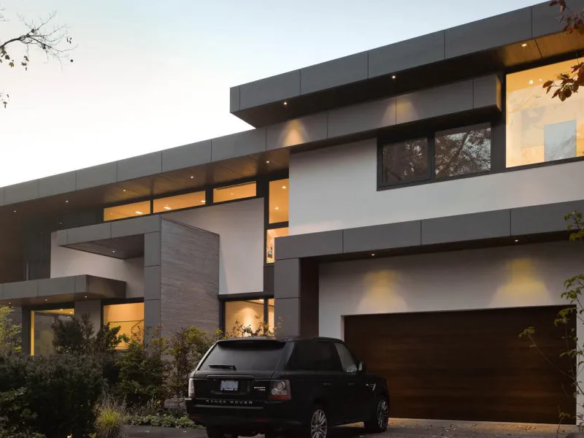
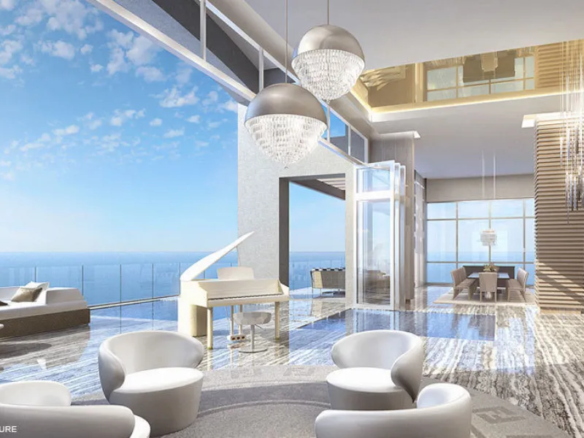
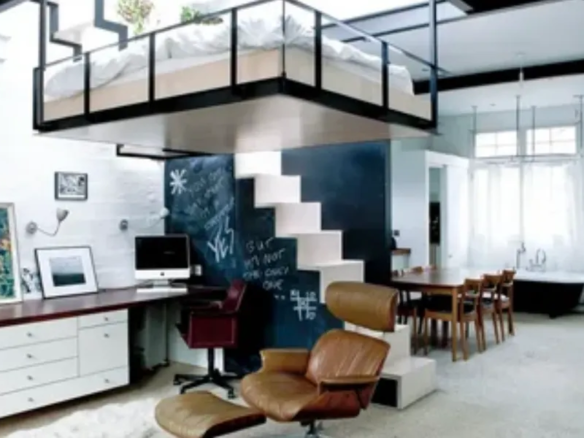
Join The Discussion